Abstract
The blood flow velocities in the basal cerebral arteries can be recorded at any age by transcranial Doppler sonography. We examined nine children with either initial or developing clinical signs of brain death. Soon after successful resuscitation increased diastolic flow velocities indicated a probable decrease in cerebrovascular resistance; this was of no particular prognostic importance. As soon as there was a clinical deterioration, there was a reduction in flow velocities with retrograde flow during early diastole, probably due to an increase in cerebrovascular resistance; this indicated a doubtful prognosis. In eight of the nine children with clinical signs of brain death a typical reverberating flow pattern was found, which was characterised by a counterbalancing short forward flow in systole and a short retrograde flow in early diastole. This indicated arrest of cerebral blood flow. One newborn showed normal systolic and end diastolic flow velocities in the basal cerebral arteries for two days despite clinical and electroencephalographic signs of brain death. Shunting of blood through the circle of Willis without effective cerebral perfusion may explain this phenomenon. No patient had the typical reverberating flow pattern without being clinically brain dead. Transcranial Doppler sonography is a reliable technique, which can be used at the bedside for the confirmation or the exclusion of brain death in children in addition to the clinical examination.
Full text
PDF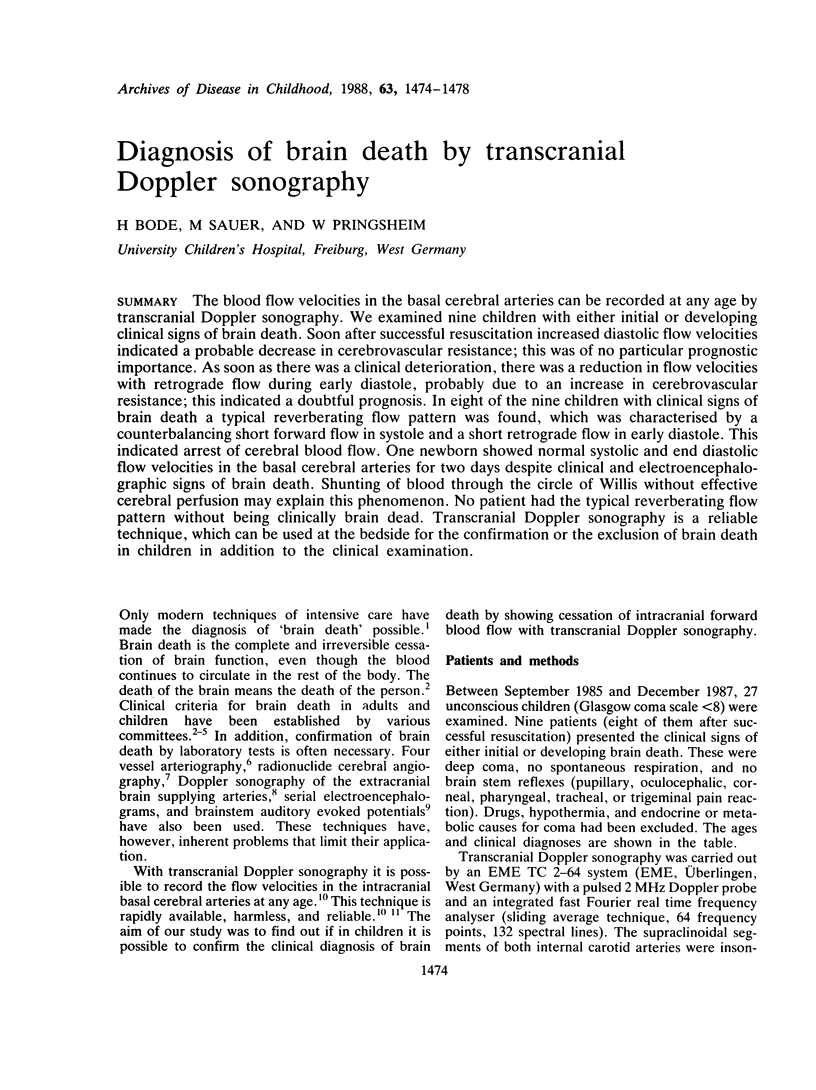
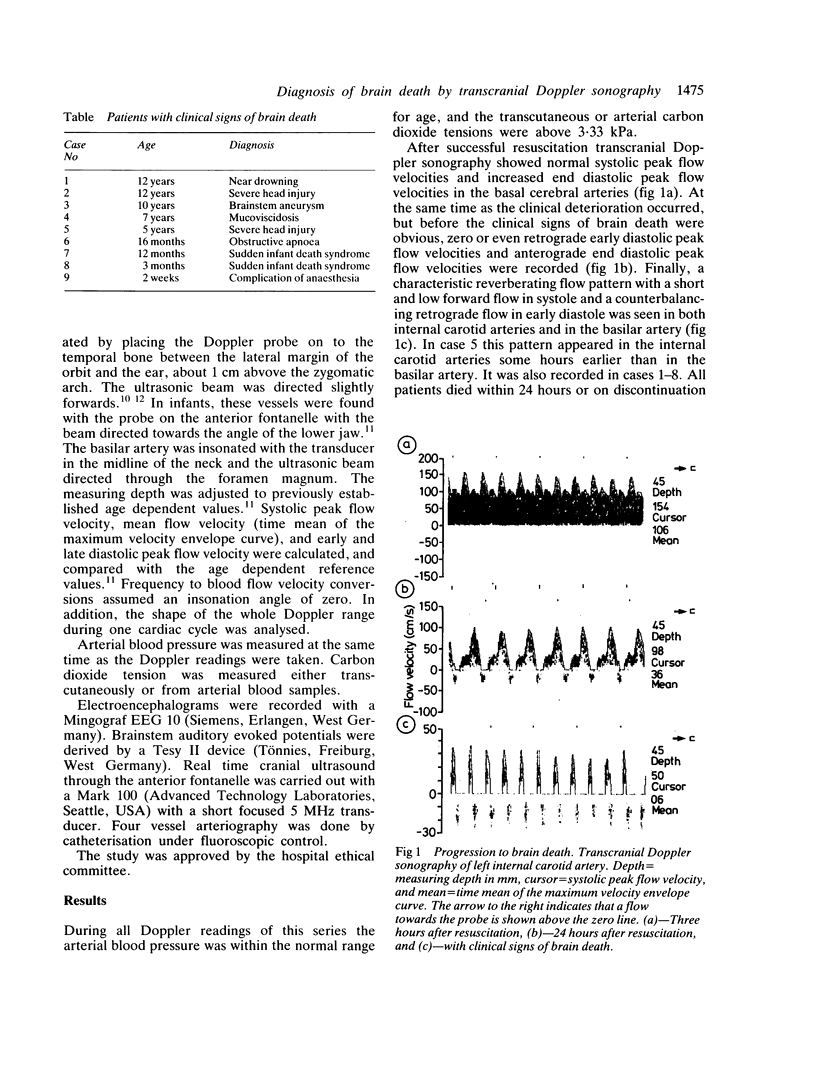
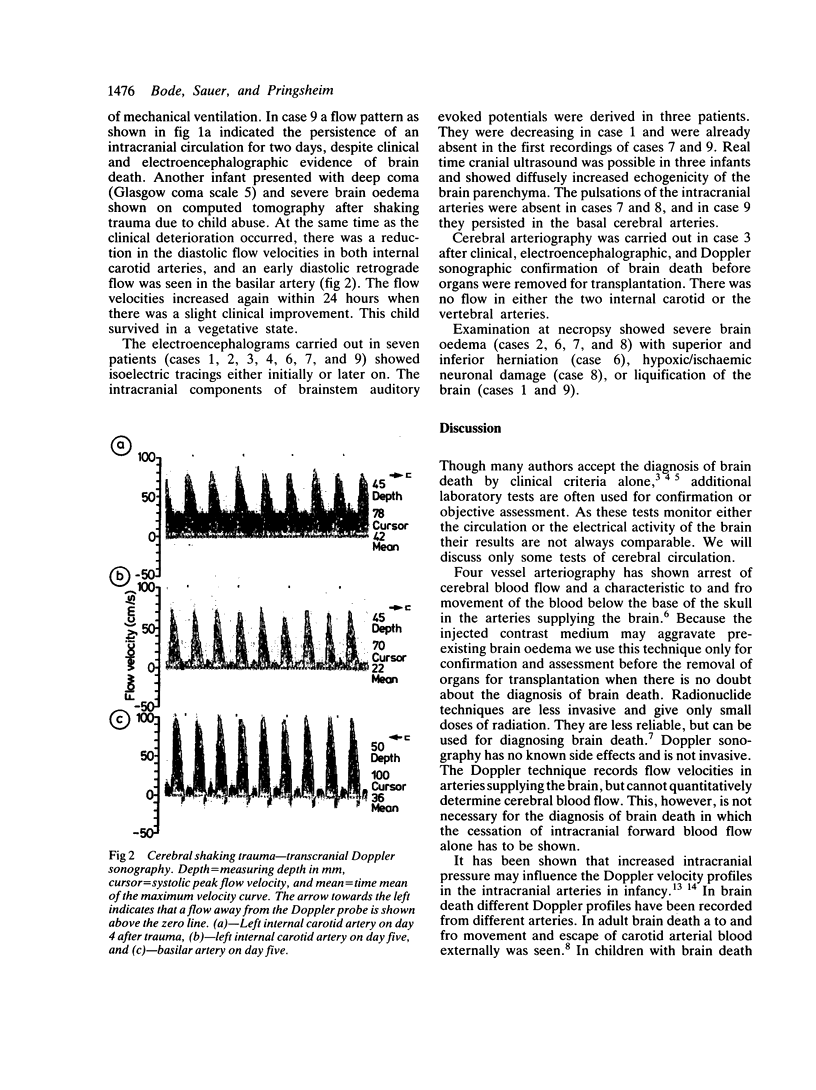
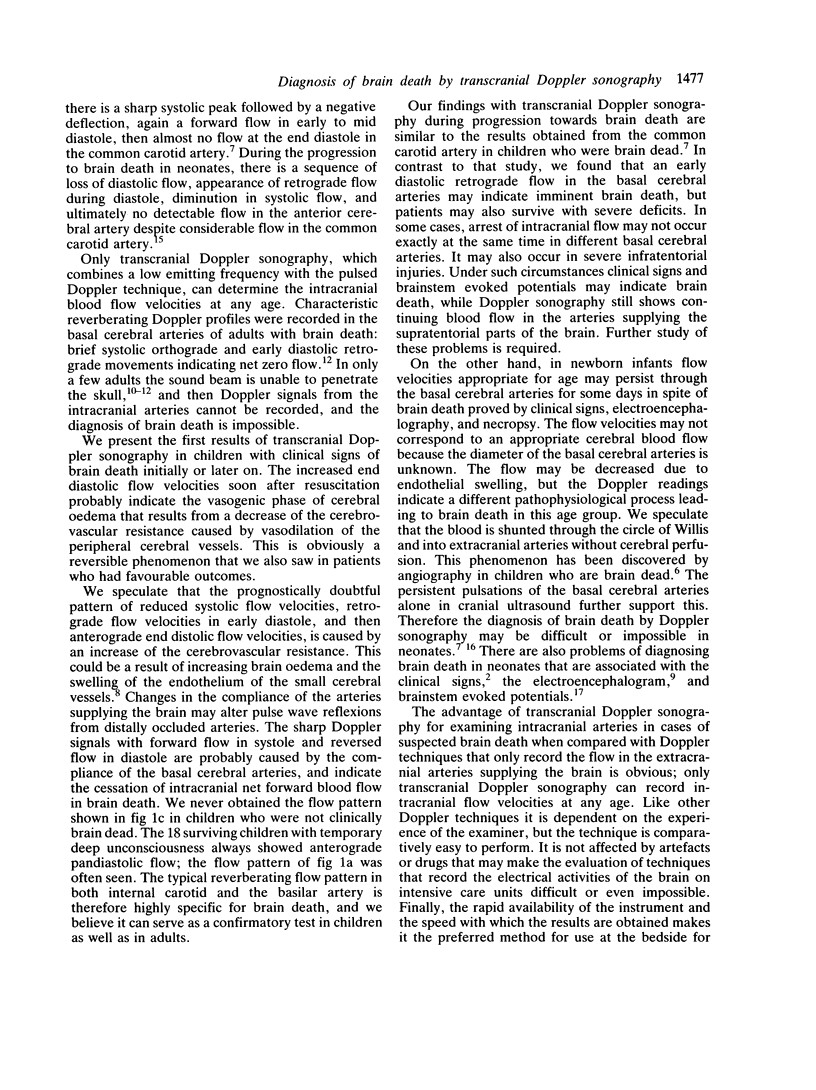
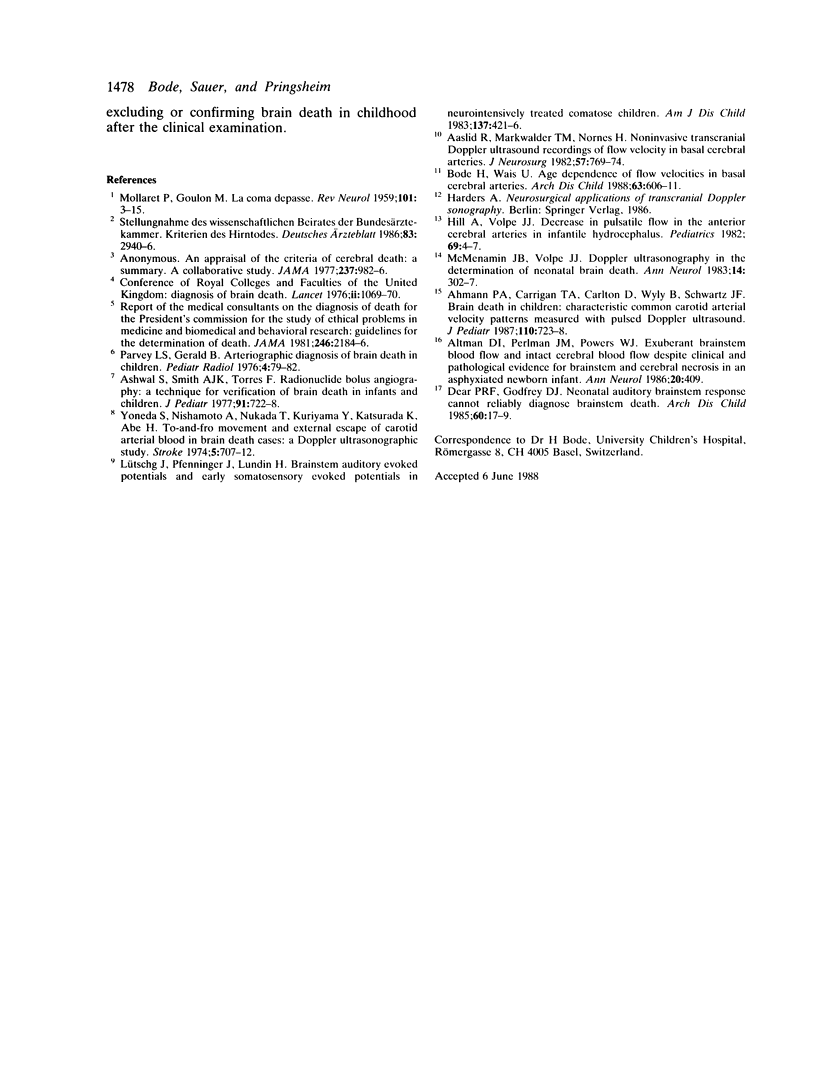
Selected References
These references are in PubMed. This may not be the complete list of references from this article.
- Aaslid R., Markwalder T. M., Nornes H. Noninvasive transcranial Doppler ultrasound recording of flow velocity in basal cerebral arteries. J Neurosurg. 1982 Dec;57(6):769–774. doi: 10.3171/jns.1982.57.6.0769. [DOI] [PubMed] [Google Scholar]
- Ahmann P. A., Carrigan T. A., Carlton D., Wyly B., Schwartz J. F. Brain death in children: characteristic common carotid arterial velocity patterns measured with pulsed Doppler ultrasound. J Pediatr. 1987 May;110(5):723–728. doi: 10.1016/s0022-3476(87)80010-0. [DOI] [PubMed] [Google Scholar]
- Ashwal S., Smith A. J., Torres F., Loken M., Chou S. N. Radionuclide bolus angiography: a technique for verification of brain death in infants and children. J Pediatr. 1977 Nov;91(5):722–727. doi: 10.1016/s0022-3476(77)81023-8. [DOI] [PubMed] [Google Scholar]
- Bode H., Wais U. Age dependence of flow velocities in basal cerebral arteries. Arch Dis Child. 1988 Jun;63(6):606–611. doi: 10.1136/adc.63.6.606. [DOI] [PMC free article] [PubMed] [Google Scholar]
- Dear P. R., Godfrey D. J. Neonatal auditory brainstem response cannot reliably diagnose brainstem death. Arch Dis Child. 1985 Jan;60(1):17–19. doi: 10.1136/adc.60.1.17. [DOI] [PMC free article] [PubMed] [Google Scholar]
- Lütschg J., Pfenninger J., Ludin H. P., Vassella F. Brain-stem auditory evoked potentials and early somatosensory evoked potentials in neurointensively treated comatose children. Am J Dis Child. 1983 May;137(5):421–426. doi: 10.1001/archpedi.1983.02140310003001. [DOI] [PubMed] [Google Scholar]
- MOLLARET P., GOULON M. [The depassed coma (preliminary memoir)]. Rev Neurol (Paris) 1959 Jul;101:3–15. [PubMed] [Google Scholar]
- Parvey L. S., Gerald B. Arteriographic diagnosis of brain death in children. Pediatr Radiol. 1976 Feb 13;4(2):79–82. doi: 10.1007/BF00973947. [DOI] [PubMed] [Google Scholar]
- Yoneda S., Nishimoto A., Nukada T., Kuriyama Y., Katsurada K. To-and-fro movement and external escape of carotid arterial blood in brain death cases. A Doppler ultrasonic study. Stroke. 1974 Nov-Dec;5(6):707–713. doi: 10.1161/01.str.5.6.707. [DOI] [PubMed] [Google Scholar]


